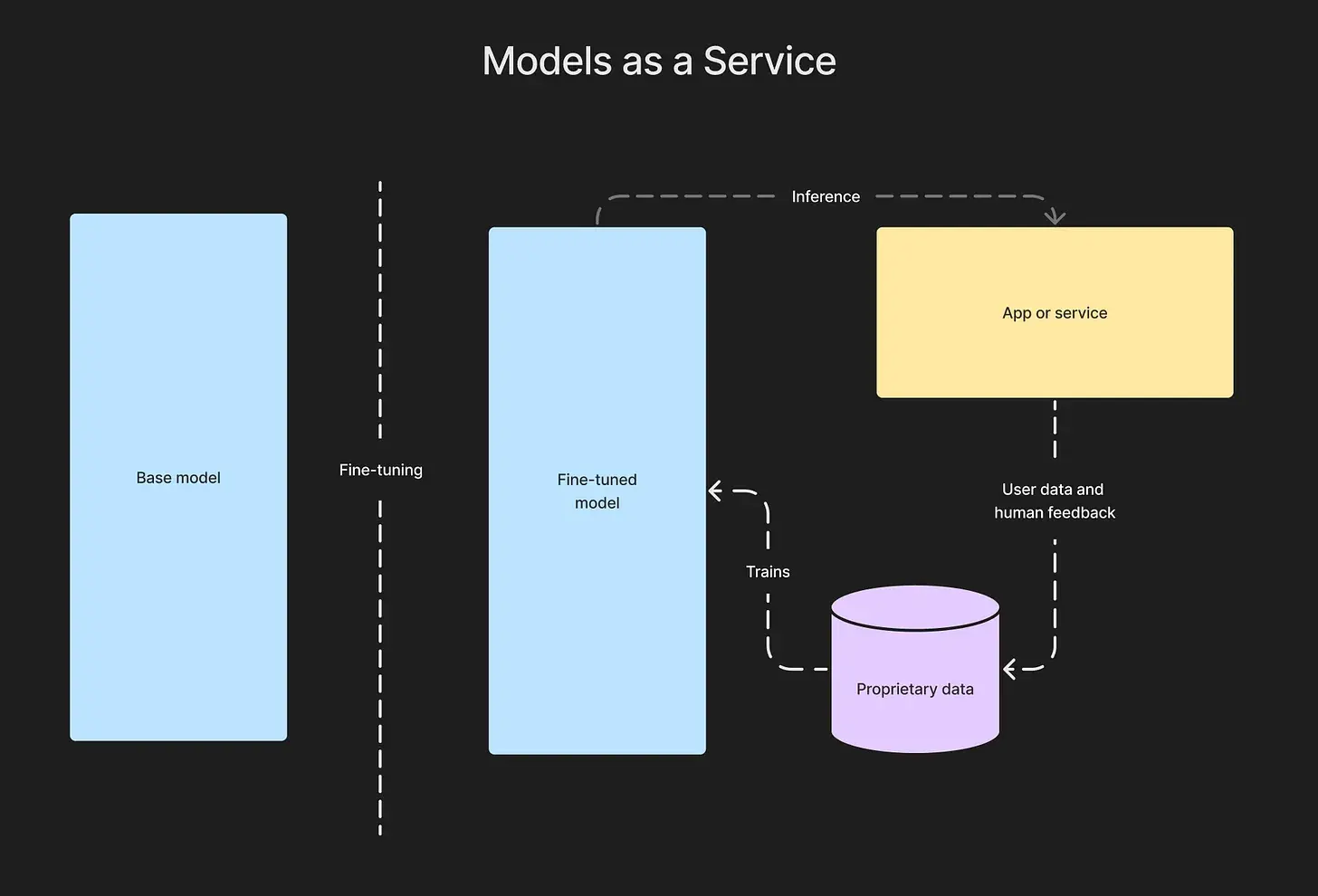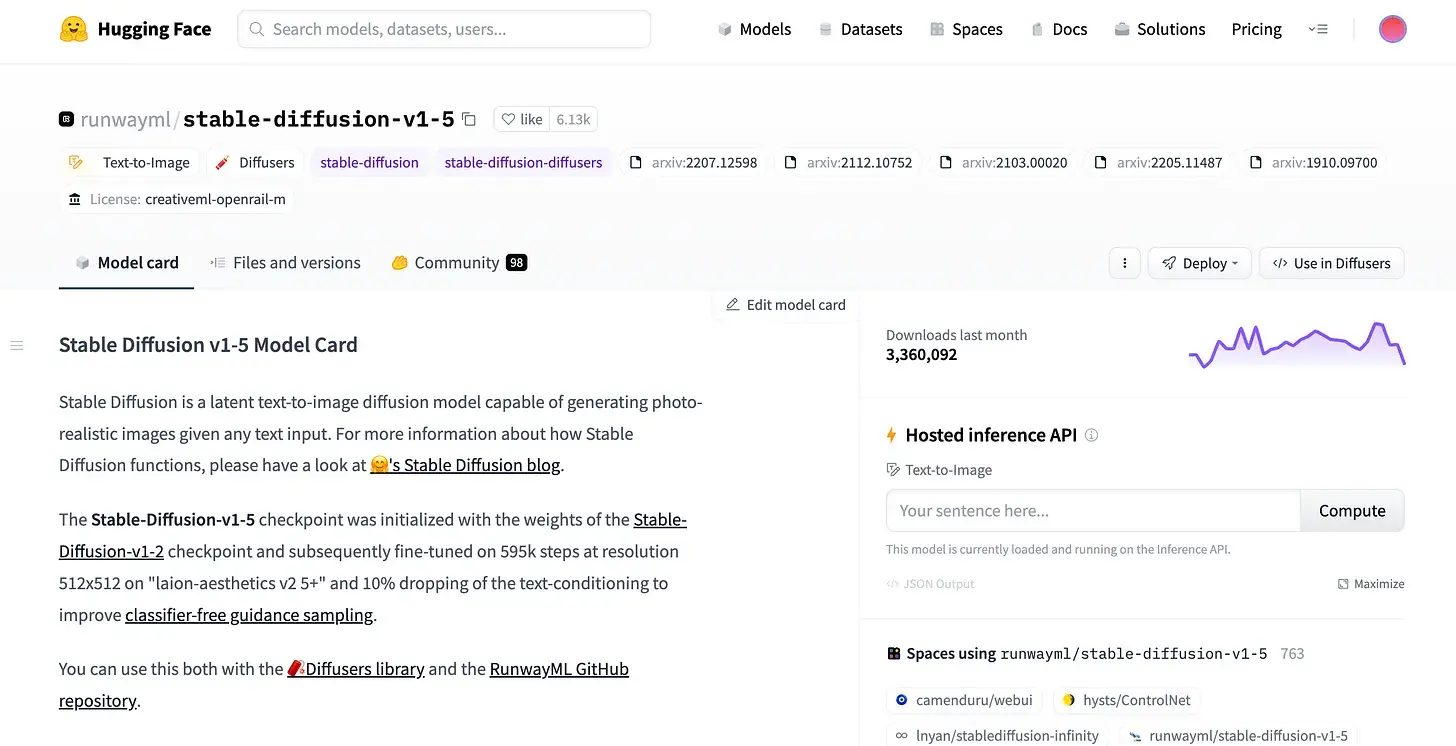MaaS is eating SaaS - 27/03/2023
How models as a service startups are redefining every industry

Software as a service has already disrupted every industry imaginable and soon machine learning models as a service (MaaS) will do the same.
Quick Recap
ML isn’t new. Walter Pitts and Warren McCulloch kickstarted the field when they published their paper “A logical calculus of the ideas immanent in nervous activity” all the way back in 1943. The first learning program was developed in 1952 designed to improve at the game of checkers and by the 1990s research in machine learning shifted from a knowledge drive approach to a data-driven one. Geoggery Hinton coined the term deep learning in 2006 to describe new algorithms which could distinguish objects in videos/images. Between then and 2020 companies such as Google, Microsoft and OpenAI continued to release new algorithms which outperformed humans in complex tasks such as beating the top-ranked League of Legends players. Most of this progress went unnoticed from the public eye until 2020 when OpenAI announced their new natural language processing algorithm called GPT-3 which had an outstanding ability to output human-like text. This was followed by an explosion of generative image models in the summer of 2022 with the release of Stable Diffusion, Midjourney and Dall•E as well as improvements in OpenAI’s GPT series.
The Breakthrough
Today, in 2023, we are at the perfect juncture of ML novelty and accessibility thanks to highly productive open sourced models.

OpenAI and StablityAI made it possible for any developer to integrate their models into apps and offer custom user experiences. With enough data, anyone can now train their own specialized model on top of the publicly available base models through a process called fine-tuning which is a massive opportunity. For example a company could fine tune GPT on their proprietary knowledge base to create an intelligent chatbot service or Disney could fine tune Stable Diffusion to create digital renderings of Mickey Mouse in seconds. Within a decade, MaaS will replace existing SaaS companies and will redefine every aspect of business with adoption occurring across several phases.
Phase 1
A lot of software programs, especially in enterprise, will be replaced by specialized models allowing managers to solve business tasks without the need for large teams of manual laborers. What started with students using GPT-3 to write their essays, will bleed into industries such as expense management where a single model can automate financial calculations and predict forecasting figures better than any employee or team previously. Plus it will be immensely cheaper.
Phase 2
The problem with phase 1 models is that they’re only good at a single task. Multi-modal models bring together video, voice and data in a unique way to solve hard problems. Recently Greg Brockman, the CTO of OpenAI, unveiled a demo for ChatGPT handling image input to write code for an app. Even more recently OpenAI announced plugins available in ChatGPT allowing users to book a plain ticket amongst other things all from a single ML interface.
Multimodal models are being released faster than anyone expected and will soon become mainstream thus rendering 95% of current software programs obsolete.
Phase 3
Before long, all models will be open source meaning any organization with a large enough budget will be able to train their own model version. The only way to stand out will be to fine tune models on your proprietary data and the biggest winners will be companies who can control and build a vertically integrated data collection and training stack where users continually provide further data to improve the fine-tuned model. Some likely winners in phase 3 will include Hospitals that measure and store patient records, social platforms which own the rights to user generated content and self-driving vehicle companies which collect driver and ride data.

Eventually models as a service will become commoditized and lasting value will be found in sourcing hard to find data to train exceptional models. Modern tech stacks will include real-time inference and asynchronous data training.
Conclusion
With GPU and energy costs plummeting and superconductors on the horizon, waiting minutes for generations will become a thing of the past. Users will generate and interact with new model applications just as quickly as you can send a message over the internet today unlocking entirely new concepts of what it means to build and create. In the final phase humans transform from builders into narrators.